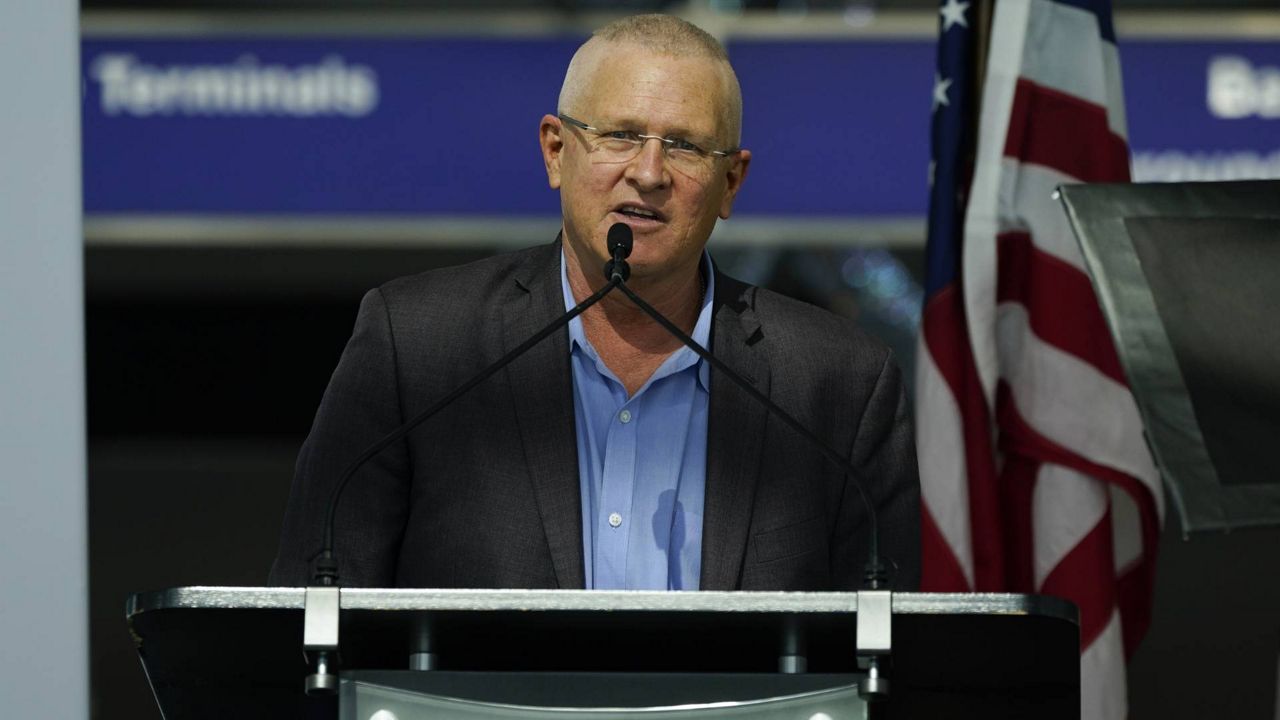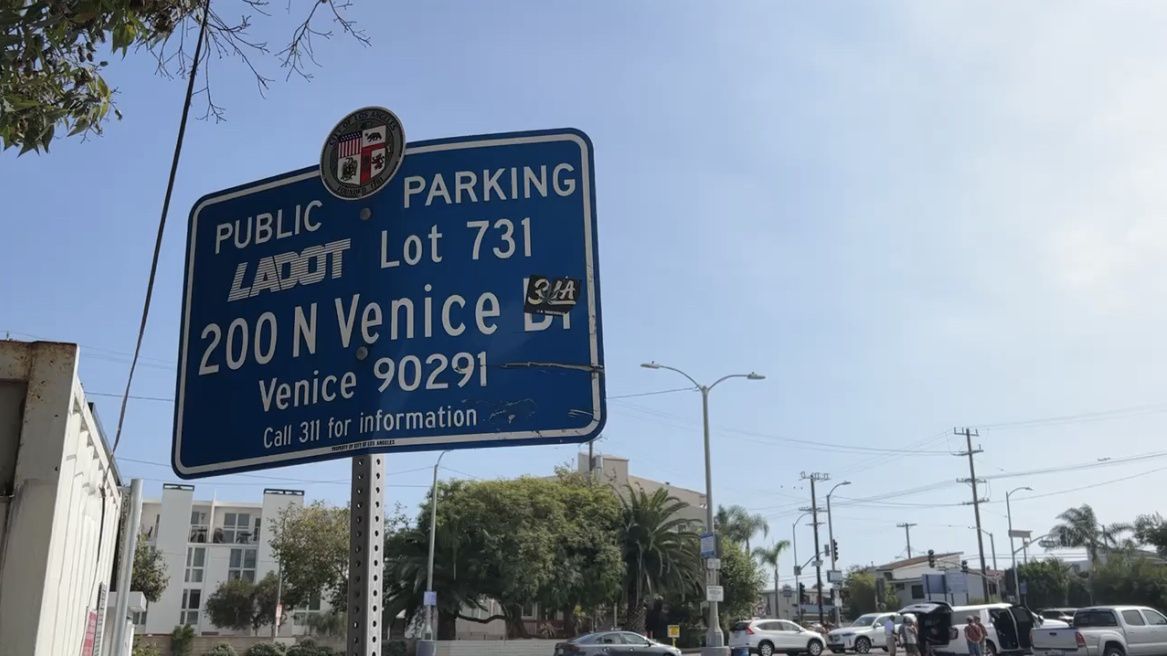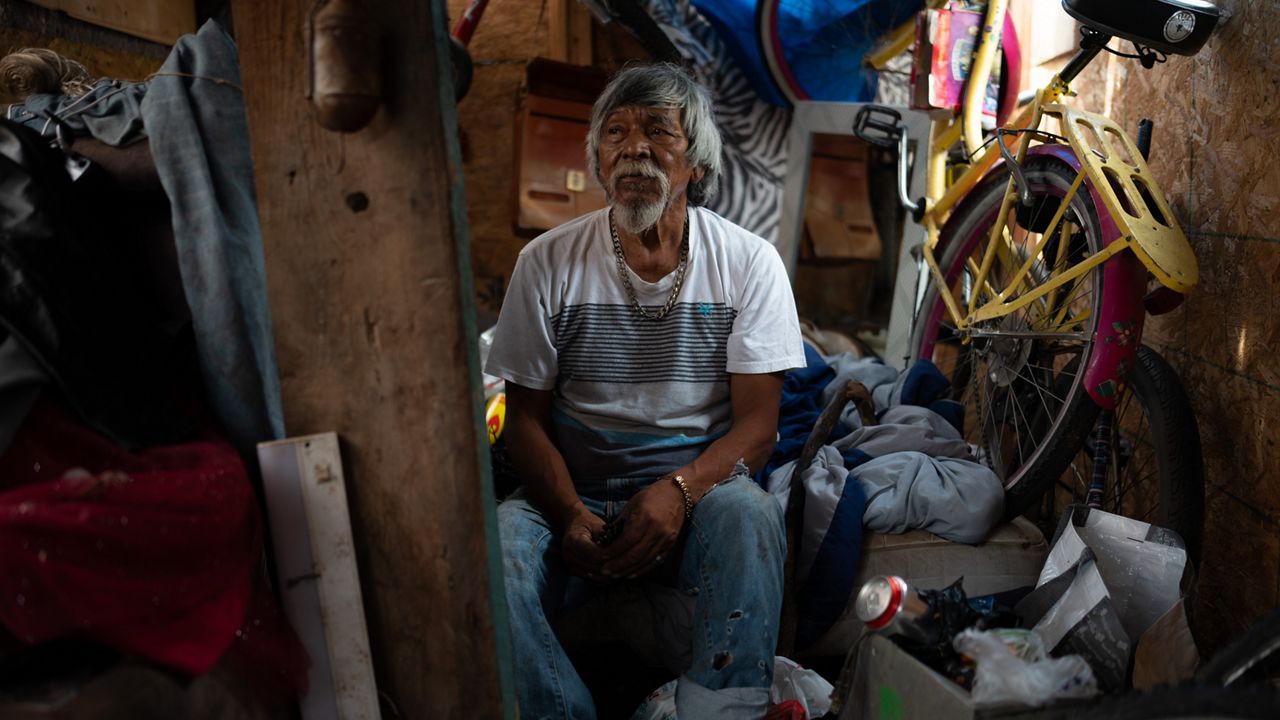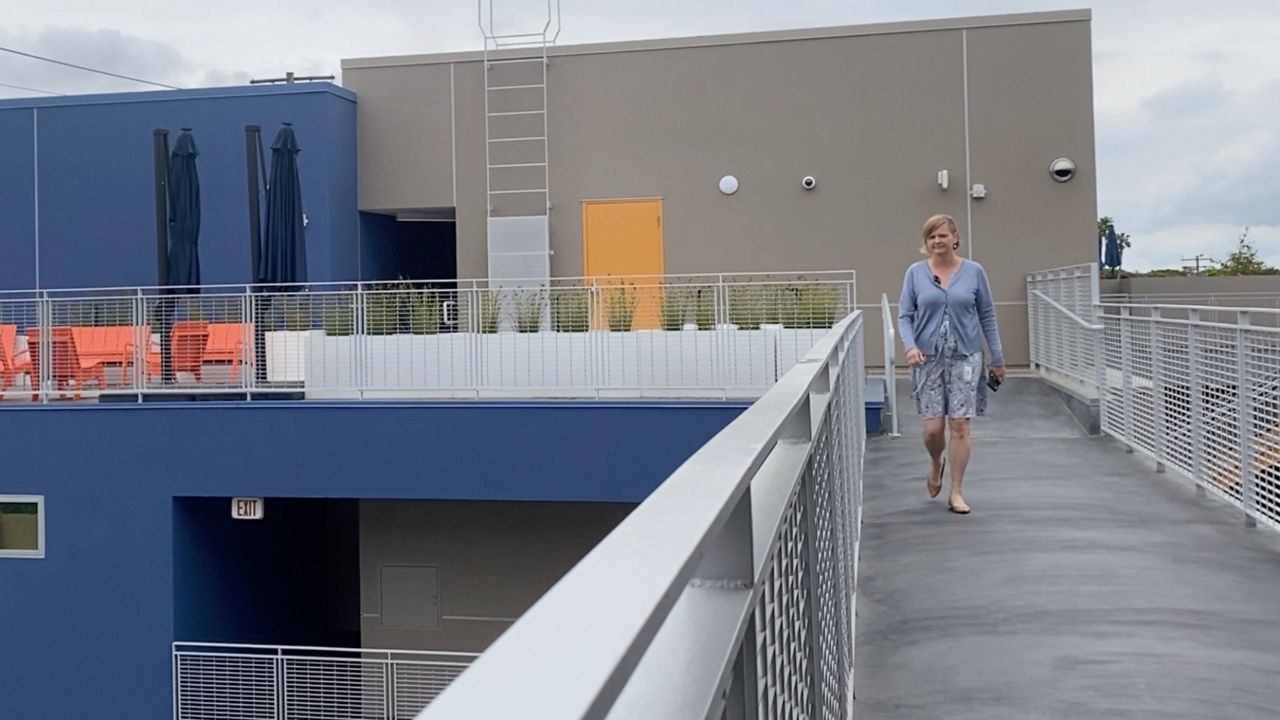LOS ANGELES (CNS) — Los Angeles Councilman Mike Bonin said Monday that 160 people who were living along the Venice boardwalk have been brought inside and accepted the city's offer of a pathway to permanent housing.
Bonin's Encampment to Home program began on June 28. The program promises all residents who accept shelter a pathway to permanent housing in an effort to clear the Venice boardwalk, where a large encampment developed during the pandemic.
What You Need To Know
- Councilman Bonin said Monday that 160 people who were living along the Venice boardwalk have been brought inside and accepted a pathway to permanent housing
- Bonin's Encampment to Home program began on June 28
- Outreach teams with St. Joseph's Center have offered services and housing to encampment residents section-by-section
- On Wednesday, the LA City Council is expected to finalize approval for an ordinance that would restrict encampments in certain areas of the city
Outreach teams with St. Joseph's Center have offered services and housing to encampment residents section-by-section. As of last Friday, residents were offered housing and were required to leave the area from Windward Avenue to Park Avenue and from Navy Street to Sunset Avenue. This week, teams are offering housing to residents between Sunset and Park avenues, and those who do not accept will be required to leave the area by Friday.
Bonin said Monday that most of the people who have accepted housing options are temporarily living in motels, some have moved into a Venice shelter and three were reunited with family. Bonin added that 119 people have been matched with permanent housing vouchers, and St. Joseph Center is searching for available units and landlords that will accept the vouchers.
In an email to constituents, he quoted a man named Moses who had been unhoused for 11 years and has accepted housing from St. Joseph's Center outreach teams:
"I have to get used to actually having a door and being able to close that door," Moses told outreach teams who checked in on him, according to Bonin. "I'll never take that door for granted. When you're outside, you're outside... I'm so grateful to this program."
Moses is living in a former motel in Venice that was converted into a Project Homekey site and is run by People Assisting The Homeless (PATH).
Along with PATH, the Encampment to Home program's partners include Safe Place for Youth, Venice Family Clinic, Self Help and Recovery Exchange, and CLARE Matrix.
Participating government agencies include the Los Angeles Homeless Services Authority, the Public Health, Mental Health and Recreation & Parks departments, and the Bureau of Sanitation.
Outcry about the homelessness crisis in Venice and throughout Los Angeles is a driving factor for a recall effort against Bonin launched by people in his district who would prefer stricter enforcement against homeless encampments.
On Wednesday, the Los Angeles City Council is expected to finalize approval for an ordinance that would restrict encampments in certain areas of the city.
The ordinance would prohibit sitting, sleeping, lying, storing personal property or otherwise obstructing the public right-of-way in several areas of the city including within two feet of any fire hydrant or fire plug, or within five feet of any operational or utilizable entrance or exit, or within 10 feet of a loading dock or driveway, or in a manner that interferes with any activity for which the city has issued a permit, or in a manner that restricts accessible passage as required by the Americans with Disabilities Act, or anywhere within a street, including bike paths.
It would also obstruct the public right-of-way within 500 feet of a "sensitive" facility, including schools, day care facilities, parks and libraries.
The ordinance would also restrict blocking the public right-of-way once the Los Angeles City Council passes a resolution to do so, posts signage and gives notice in the following areas:
- up to 500 feet of a designated overpass, underpass, freeway ramp, tunnel, bridge, pedestrian bridge, subway, wash or spreading ground, railroad track or where lodging unsheltered or in tents is unhealthy, unsafe and incompatible with safe passage
- up to 1,000 feet of a facility opened after Jan. 1, 2018, that provides shelter, safe sleeping, safe parking or navigation centers for persons experiencing homelessness
The ordinance also would allow the city to prevent encampments for a period of no longer than one year in areas that are deemed an ongoing threat to public health or safety, including due to:
- death or serious bodily injury of any person at the location due to a hazardous condition
- repeated serious or violent crimes or threats of serious or violent crimes, including human trafficking
- fires at the location
The City Council on June 29, when passing a motion to request the city attorney draft the ordinance, also instructed the city administrative officer to develop and implement a Street Engagement Strategy within 30 days to offer people suitable and available overnight shelter, interim or permanent housing.
Councilman Mike Bonin and Councilmwoman Nithya Raman voted against the ordinance during its first consideration, and 13 other council members voted to approve it. During its second consideration on Wednesday, the ordinance will only need eight yes votes to pass.
"What is wrong with this ordinance today and why am I voting against it? Because what we're doing today, even as improved, tells people who are unhoused and unsheltered and have no place to go where they cannot sleep, but it does not tell them where they can sleep. That's what it comes down to for me ... where can people go, where can people sleep when they do not have an alternative," Bonin said on July 1 before the vote.
Bonin shared with council members his own experience being unhoused, saying, "Some of those nights I slept in the car, some of those nights, when my car was in the shop, I slept on the beach. I cannot tell you how much turmoil is in your heart when the sun is setting and you don't know where to sleep. I cannot tell you how demoralizing and dehumanizing and defeating that experience is when you don't know where you're going to sleep."
He added that the Los Angeles Homeless Services Authority said Thursday that the city only has enough beds to shelter 39% of the city's homeless population.







